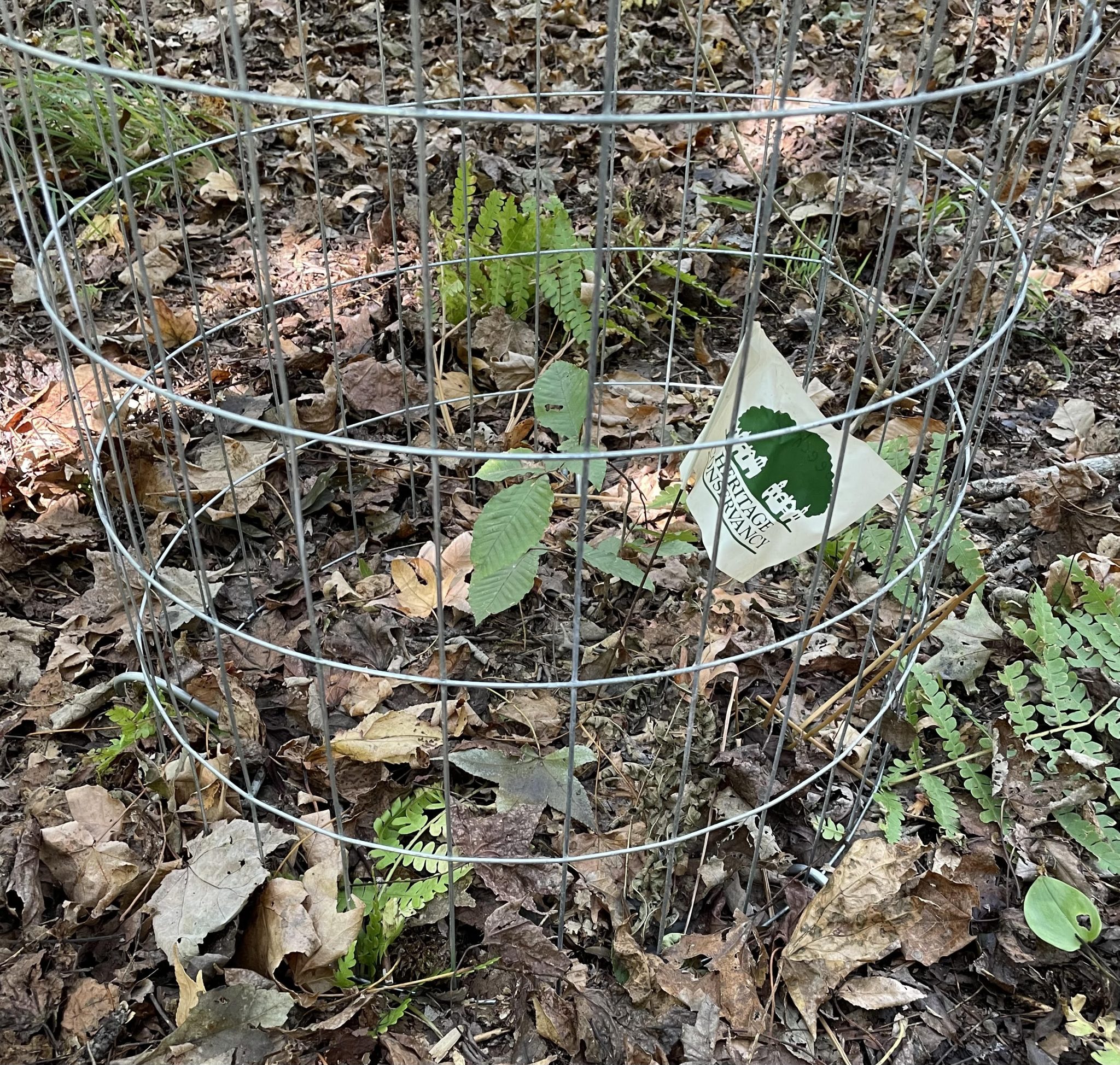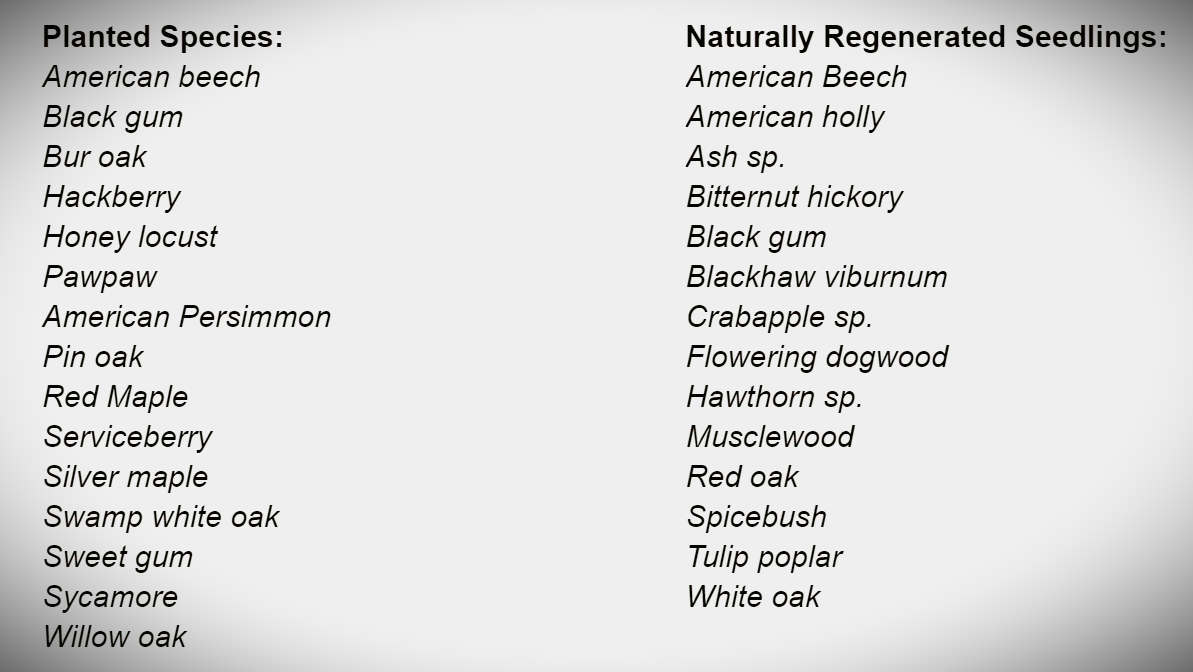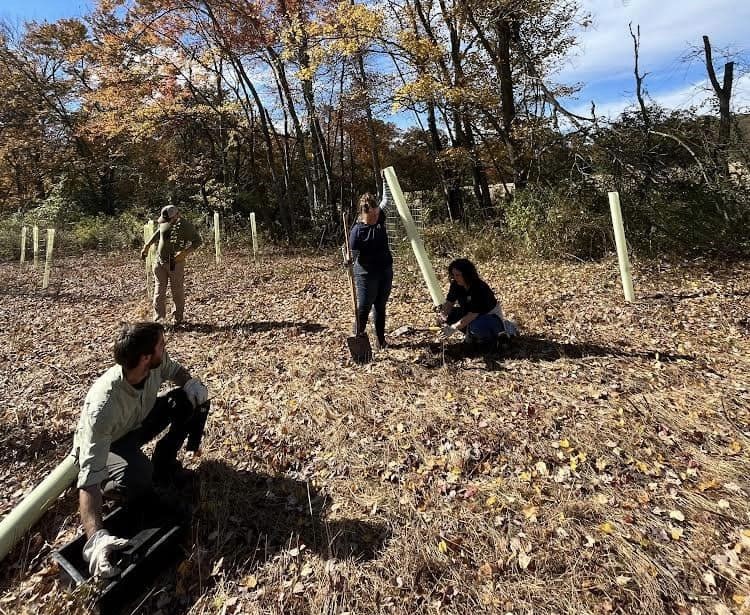They say the best time to plant a tree was 20 years ago, and the next best time is today.
There are many good reasons to plant a tree. At Heritage Conservancy, we are primarily concerned with forest regeneration along streams, hard and soft mast production for wildlife, and trees and shrubs that support the lifecycle of pollinators.
Whether your motivations align with ours or are different, there is a possible alternative to purchasing trees that can reduce costs while still achieving your goal.

The Cost of Trees and Their Protection
If you’ve purchased trees recently, you know that the cost is dependent on the size of the tree, varying from $55 for a 5-gallon container to $100 for a 10-gallon container. And if you want a larger tree, well, the cost rises significantly.
Over the last 3 years, Heritage Conservancy has planted over 1000 native trees and shrubs. Generally, we pay about $15 to $30 for each shrub and between $35 and $100 per tree.
Anyone who lives in Bucks County knows that you can’t simply plant a tree and walk away – you must protect it from the deer and water it regularly. We protect our plantings from deer browse by either using a tree tube or constructing a cage around it.
Both have their benefits and drawbacks. Tubes (at about $9 per tree) are cheaper and easy to install, but you’re adding more plastic to the environment and they are not aesthetically appealing.
Cages must be constructed, cost more (about $11 per tree), and are a magnet for invasive vines of all kinds. But trees grown in wider cages can swing with the wind and grow stronger stems, and cages become nearly invisible from about 30 feet away.
The state does a really good job of providing grants to plant trees in riparian areas, areas along streams which provide many benefits to improve water quality and wildlife habitat. State support has helped us in our tree plantings.
Where we have a harder time finding funds is in upland areas where the deer have eaten every seedling for the last 20 years or so, resulting in forests that have no native understory and no native trees ready to fill gaps in the canopy when an older tree dies. Funding for these projects is found piecemeal, through donations, property funds and as a side project for other grant-funded initiatives.

A Test
Four years ago, we applied for a riparian tree planting grant for our Bellwood Nature Preserve from the Pennsylvania Department of Environmental Protection’s Growing Greener Fund. We proposed to plant 200 native trees and shrubs and to cage or tube 100 naturally regenerating seedlings, and compare the survivability of each.
The basic question: Which is more likely to survive, a newly planted tree or a seedling that has “planted itself” and rooted naturally in the forest but that we then intervene to protect? Could “free” trees survive and grow as well as newly planted ones if they were tended and given the same low-cost protection (a tube or cage)?
We received the grant in 2020 and started planting and protecting trees in the spring of 2021.
All did not go well. Hurricane Ida hit at the end of summer and flattened or washed away nearly all of our trees and shrubs. We secured what could be salvaged and then replanted what was missing. Next, an overzealous sanitation worker, charged with cutting the sanitary line right-of-way, destroyed another 50 trees and shrubs! We persevered and the township paid to have everything replanted.
Over the next two years, we monitored the plantings and managed competing invasive vegetation around the plantings.
Our study site was the Bellwood Nature Preserve, located in Northampton Township. It is an important greenway between the Churchville Nature Center and Playwicki Park, though it is not open to the public. It is a former farm that was subdivided in the 80s, much of it into a townhouse development, but still preserving over 100 acres of forest, meadow, and wetlands.
The soils there are a deep sandy loam – excellent for digging holes and planting trees, and an ideal location for our study! Despite the setbacks previously mentioned, we’ve found that practically everything grows really well on the preserve.
Of the planted species, we had a 98% survivability rate. Remarkably, the naturally regenerating seedlings had a 100% survivability rate!
We recognize that this is not a rigorous scientific study and that it unfolded over a short period of time, so we will continue to monitor, maintain, and log observations over the years. Perhaps in the future, we will write an update to this survivability study.
So you decide. Plant a tree, protect it and watch it grow, or save yourself a little money and simply protect a seedling that is already there.

This study was conducted, tracked, and written up by Jim Drennan, Land Conservation Manager at Heritage Conservancy, along with Conservation Steward Tyler Kovacs.
Thank you to the Pennsylvania Department of Environmental Protection Growing Greener grant program and the Bucks County Conservation District for their continued support.
